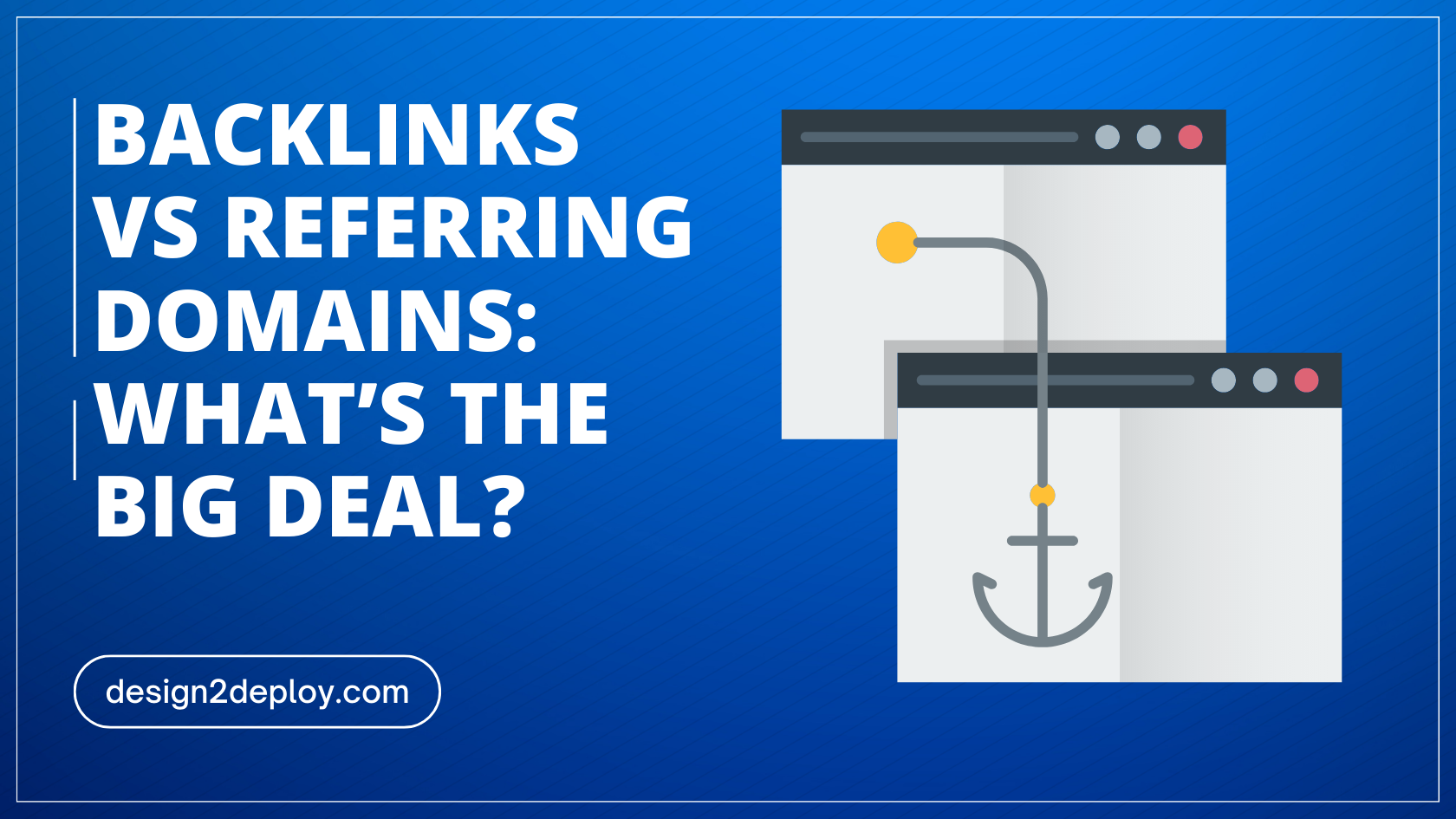Are you familiar with the terms “backlinks” and “referring domains”? If you’re in the world of search engine optimization, then these phrases are likely part of your daily vocabulary.
But for those who are new to SEO, understanding the difference between backlinks and referring domains can be confusing.
In this blog post, we’ll break down backlinks vs referring domains, and their importance for website ranking, and provide tips on how to improve both metrics.
So read on to learn more about backlinks vs referring domains!
Table of Contents
What are Backlinks?
Backlinks are links that point to your website from other websites. For example, Let’s say you have an article about “Top 10 ways to reduce belly fat”.
And websites related to the fitness niche let’s name them ‘Site A’ and ‘Site B’ for now find your article and find it interesting.
So, eventually, these sites will mention your article when they write about content related to reducing bellying fat.
A portion of a text will be chosen to link to your article on “Top 10 ways…”. The chosen text is known as the anchor text.
And this process of linking to other people’s content/posts is known as backlinking.
FUN TASK: Mention the number of external links that we have used on this post in the comments!
What are Referring Domains?
So, now that you know what backlinking is, understanding referring domains is so simple.
The website from which the links are coming is called the referring domain.
In the example we discussed, the sites ‘Site A’ and the ‘Site B’ are the referring domains.
The main difference between backlinks and referring domains is that backlinks are an indication of the number of links pointing to your website while referring domains show the number of unique websites linking to you.
Backlinks and SEO
If you are trying to learn about SEO, blogging, or marketing you definitely must have come across the phrase backlink without a doubt.
Is that a big deal? Why do people fuss so much about backlinks?
Blogging has bloomed like never before in recent years, and with that, a lot of people started creating blogs, and the competition is heavy.

For every search query, google shoots you millions of search results. But only a handful gets a lot of traffic and eyeballs. How does that happen?
Multiple factors can contribute to this. But, the most important among them is the number of backlinks a post has.
If a post has a huge number of backlinks, it is ultimately a signal to Google that the website is an authority and is definitely trustworthy (since many other websites do believe so). So, Google will eventually rank these articles with higher backlinks in the search results.
More Number of Eyeballs == More Revenue
That is why people are so crazy about backlinks and there are several link-building companies that will help you with this process of building relevant backlinks in your niche.
How to get backlinks and referring domains
There are a number of ways to get backlinks and referring domains. The most common way is through link building.
Link building is an extensive topic on its own. But in simple terms, it involves using various approaches to get more backlinks to your site or post.

Some of which include submitting articles to directories, guest blogging, or by participating in forums and discussion boards like Quora or Facebook groups.
You can also get backlinks and referring domains by creating great content that other websites will want to link to.
Finally, you can use social media sites like Twitter and LinkedIn to generate backlinks and referring domains.
Factors of the best backlink profile
Yes, your articles need backlinks. But not all backlinks are equally good or valuable. There are various factors that Google will take into account when considering your backlink profile.
i) Diversification
Diverge your backlink profile to include links from multiple referring domains. If a post or page gets a backlink, make sure to get 10 backlinks from different referring domains instead of getting all those 10 links from a single referring domain.
Getting links from various websites increases your website’s authority and ultimately helps with your SEO.
ii) Domain Authority
The domain authority of the referring domain does play a major role. Getting a backlink from a referring domain with a domain authority of 50 is a lot more valuable than getting one from a website with a domain authority of 10 or 20.
But it doesn’t mean you should avoid backlinks from domains with low DA value. These domains also help and over a period of time when these referring domains with lower DA values started picking up & getting more traffic, it will automatically be beneficial to your site as well.

iii) Site Quality
Most of the time, especially when people buy backlinks it is easier to get fooled. When you get a backlink from a site it has to be a well-maintained site with no history of scams or other attacks.
Even if the DA is low if a site is well-maintained backlinks do provide value. But, getting backlinks from spammy, fishy sites including gambling, drugs, and other illegal activities can affect your site’s ranking as well.
iv) Relevancy
The backlinks have to be relevant enough. Linking to a weight loss post in a technology blog doesn’t feel right, isn’t it?
The backlinks you get or you give has to be relevant to the topic and content in the post. This will add a lot of value to both parties.
Conclusion
In summary, understanding the differences between backlinks and referring domains is essential in devising an effective link-building strategy.
With this knowledge, you can start today building a powerful link profile that will help increase your search engine rankings and traffic from organic searches.



